Being the national symbol of the United States and one of the leading species to push against harmful pesticides, the Bald Eagle has earned its place as one of the most recognizable birds worldwide.
However, this species has some remarkable history, behaviors, and lifestyles that only some know about.
So, without further adieu, let’s dive into 15 facts about the Bald Eagle!

1. The Bald Eagle became the national symbol of the United States of America in 1782.
The story of how the Bald Eagle became the United State’s national symbol is not as straightforward as you might think.
Following the Declaration of Independence in 1776, the Continental Congress tasked Benjamin Franklin, Thomas Jefferson, and John Adams with creating the official seal of the newly formed nation. Unfortunately, they never came to an agreement that satisfied the Congress.
Finally, in June 1782, after two additional committees and two more failed attempts, the Secretary of Congress Charles Thomson combined aspects of all three committees into the first seal of the United States.
William Barton, a Pennsylvania lawyer from the third committee, contributed the Eagle to the design, symbolizing power and strength.
Thomson increased the prominence of the Eagle and pushed for the nondescript eagle used in the seal to be the American Bald Eagle. Congress signed this seal into approval, and now the Bald Eagle is the official mascot of our young nation.
2. The Bald Eagle’s binomial name, Haliaeetus leucocephalus, translates to “White-headed Sea Eagle.”
Both the genus and species name of the Bald Eagle are Latinized Greek words:
The genus Haliaeetus comes from haliaetos, meaning “sea eagle,” and leucocephalus, from leukos and kephalḗ, meaning “white” and “headed,” respectively.

The Bald Eagle’s binomial name is an example of a nearly perfect description of the species’ physical appearance and ecological role. While this species isn’t truly bald in that it has no feathers, the white aspect of its cranial plumage gives it this name.
The root of our common English name for the Bald Eagle comes from the word “piebald,” which means that the animal has contrasting patches of white and black. In this case, the Bald Eagle’s white head and tail contrast with its otherwise extremely dark brown body and wing coloration.
3. Benjamin Franklin’s proposal of the Wild Turkey as the national symbol instead of the Bald Eagle isn’t entirely accurate.
While Benjamin Franklin wasn’t a fan of the Bald Eagle representing the newly formed United States, he didn’t directly propose the Turkey as his preferred representative.
Franklin wrote in a letter to his daughter, “For my own part I wish the Bald Eagle had not been chosen as the Representative of our Country. He is a Bird of bad moral Character… too lazy to fish for himself, he watches the Labour of the Fishing Hawk; and when that diligent Bird has at length taken a Fish, and is bearing it to his Nest for the Support of his Mate and young Ones, the Bald Eagle pursues him and takes it from him.”
He goes on to write, “For the Truth the Turkey is in Comparison a much more respectable Bird… a Bird of Courage, and would not hesitate to attack a Grenadier of the British Guards who should presume to invade his Farm Yard with a red Coat on.”
So, in his letter, Franklin never directly says the Wild Turkey should be the nation’s representative. Instead, he describes the Turkey as a “more respectable Bird” than the Eagle with “bad moral character.”
4. It takes five years for a Bald Eagle to reach its full adult plumage.
While it isn’t an exact method of aging this species, the stages of a Bald Eagle’s plumage are reasonably recognizable.
Here are the primary appearances and stages of the Bald Eagle’s plumage:
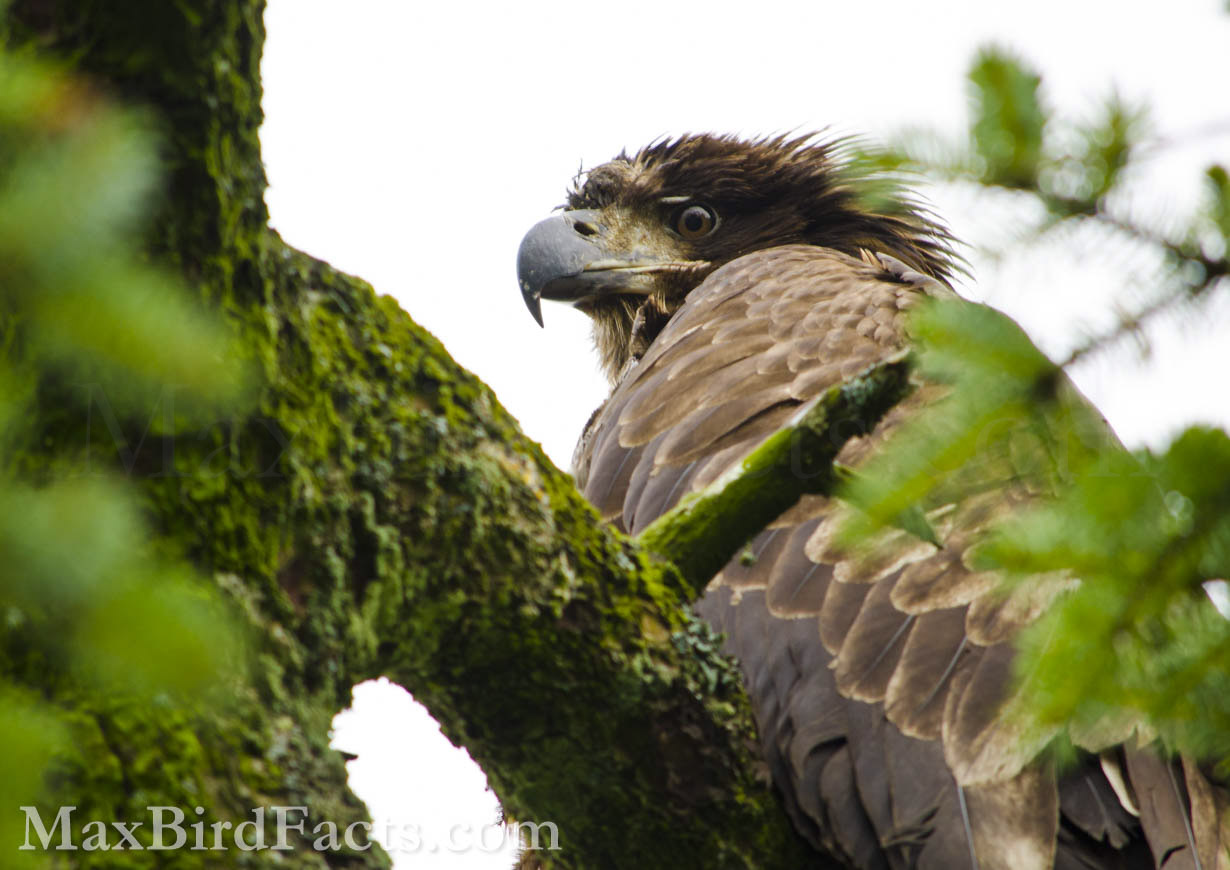
1st Year—Juvenile or First Basic Plumage—In this stage, the young Eagle is fully fledged and has an overall chocolate brown plumage with little to no white except for in the leading edge of its underwing. Its beak is mainly sooty gray with a yellow base. The tail is primarily white with a bold brown border.
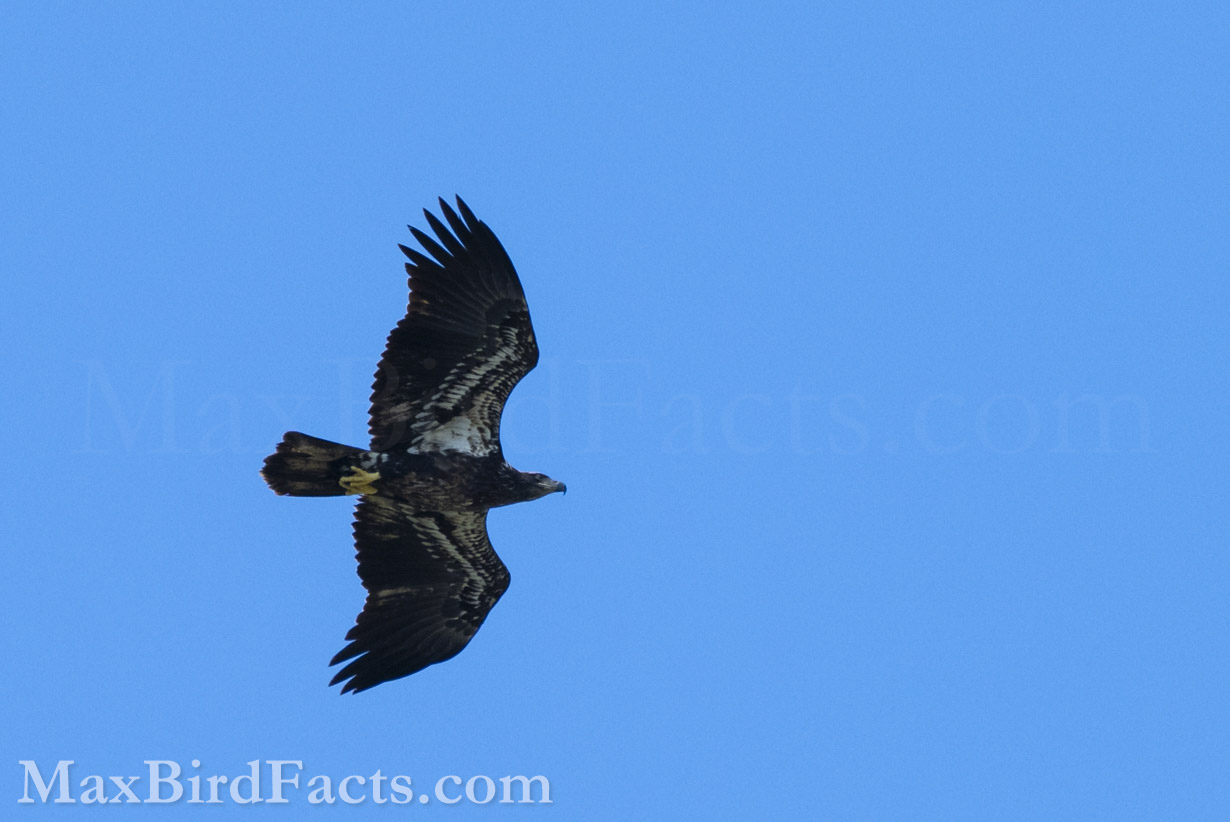
2nd Year—Second Basic Plumage—By the bird’s second year, there is significantly more white throughout its body plumage. The crown becomes much paler, and the head has some white speckles. The underwings are now thoroughly mottled white and brown. The border of the tail is now much thinner at its end and nearly gone on the sides.
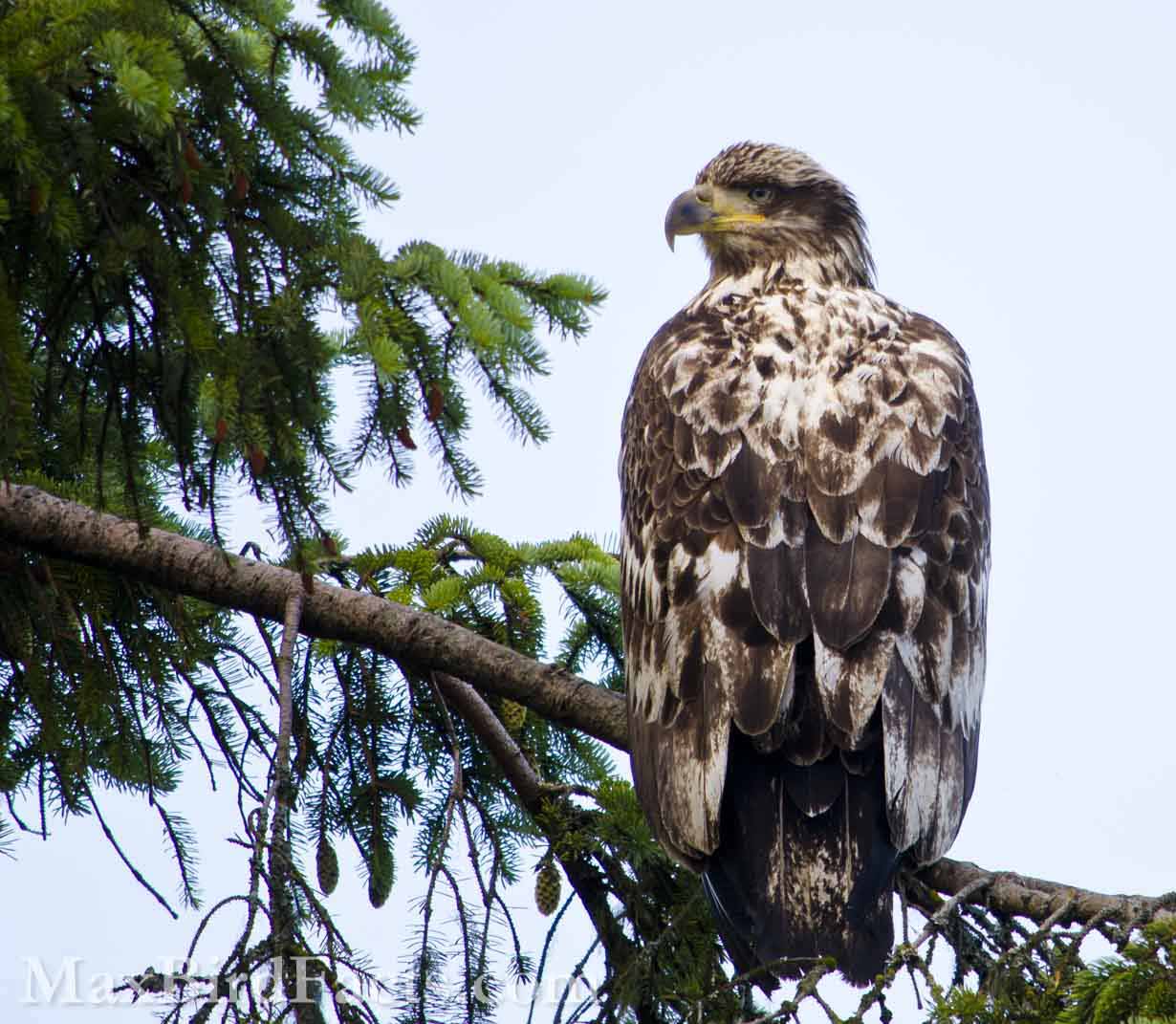
3rd Year—Third Basic Plumage—In the Eagle’s third year, its head becomes noticeably paler. Specifically, the crown, nape, and throat turn light gray, and a dark eye stripe is apparent. There are still significant amounts of white in the underwing, but noticeably less than during its Second Basic Plumage. The dorsal aspect of the wing is almost entirely uniform brown, and the white dorsal aspect of the tail is now much more visible.
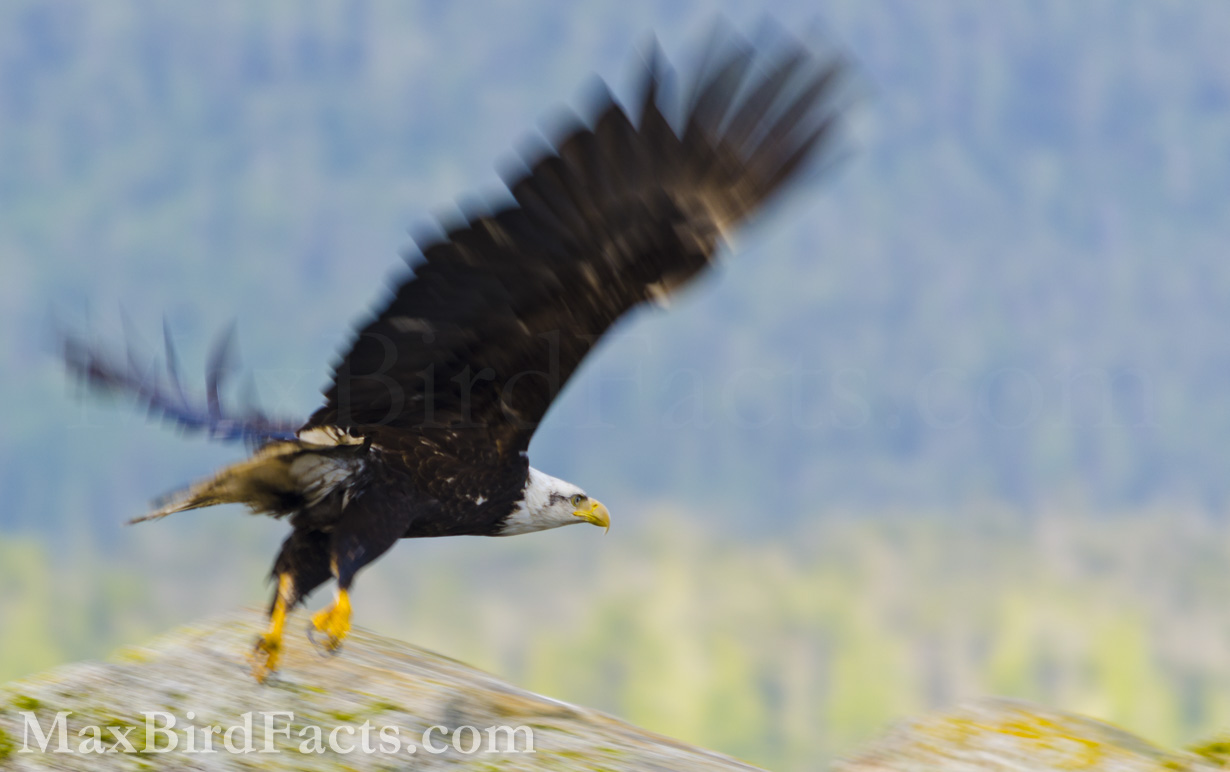
4th Year—Fourth & Fifth Basic Plumage—This stage is slightly more complicated to differentiate and usually occurs at different times in the Bald Eagle’s fourth year. Here, the head has taken on the iconic white color with a few patches of brown remaining, particularly around and behind the eyes. This bird’s body is now almost wholly brown, with minor pepperings of white still seen on the belly and underwing. The beak has taken on an utterly yellow appearance. The tail is almost entirely white with the thinnest border of brown at its terminal end.
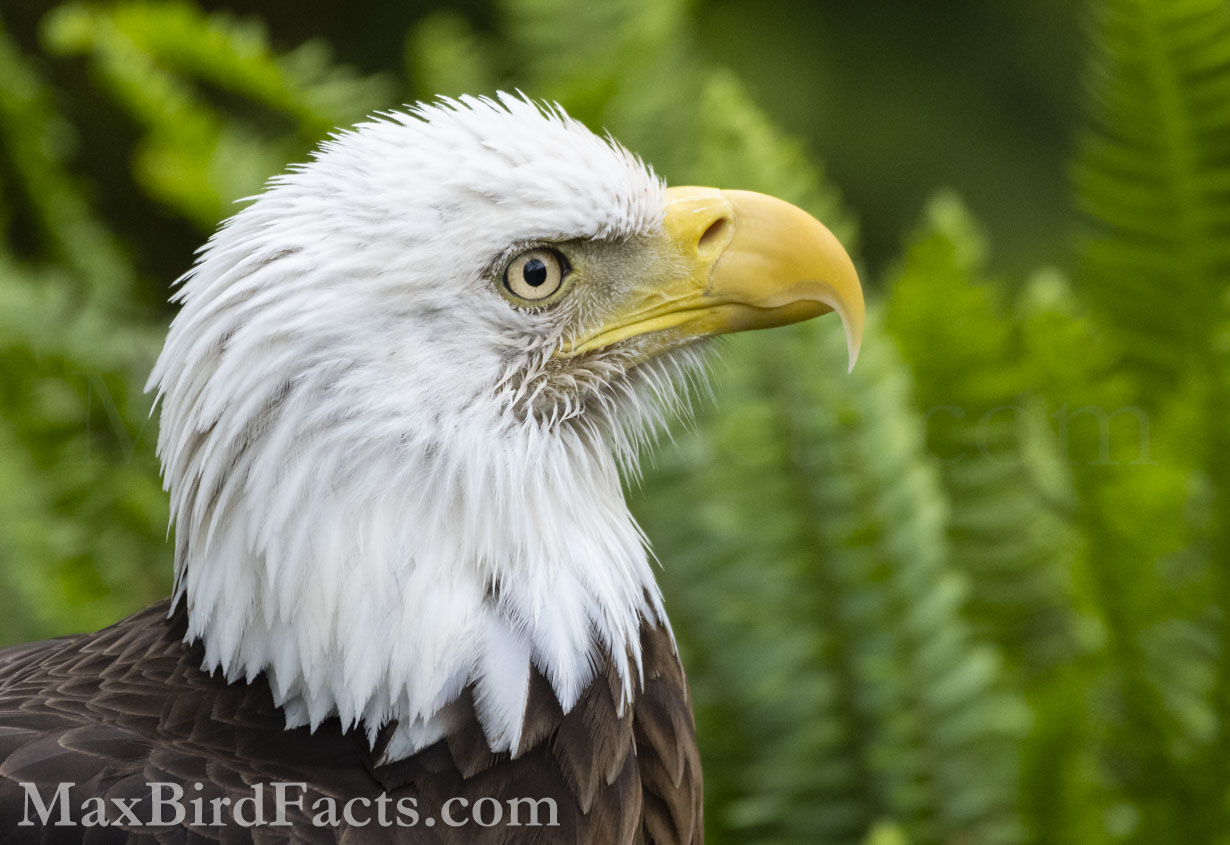
5th Year—Adult or Definitive Basic Plumage—By its fifth year, the Bald Eagle has earned its full “adult” plumage. The head and tail are now pure white, while its entire body is dark brown. Its beak is bright yellow, and its eyes are silvery gold. This is the stage that virtually everyone thinks of when imagining a Bald Eagle.
5. Bald Eagles primarily feed on fish but won’t pass up an easy meal.
While these birds are known for their fishing prowess, and fish comprise over 50% of their diet, Bald Eagles are highly opportunistic raptors. Anything from frogs to landfill scraps to a beached whale carcass is on the menu as far as this species is concerned.
This dietary flexibility has been critical to the Bald Eagle’s success. As we’ll discuss later in this article, the Bald Eagle nearly became extinct in the early 20th century.
However, partially due to being non-picky eaters, this species bounced back from the brink of extinction and is soaring today.
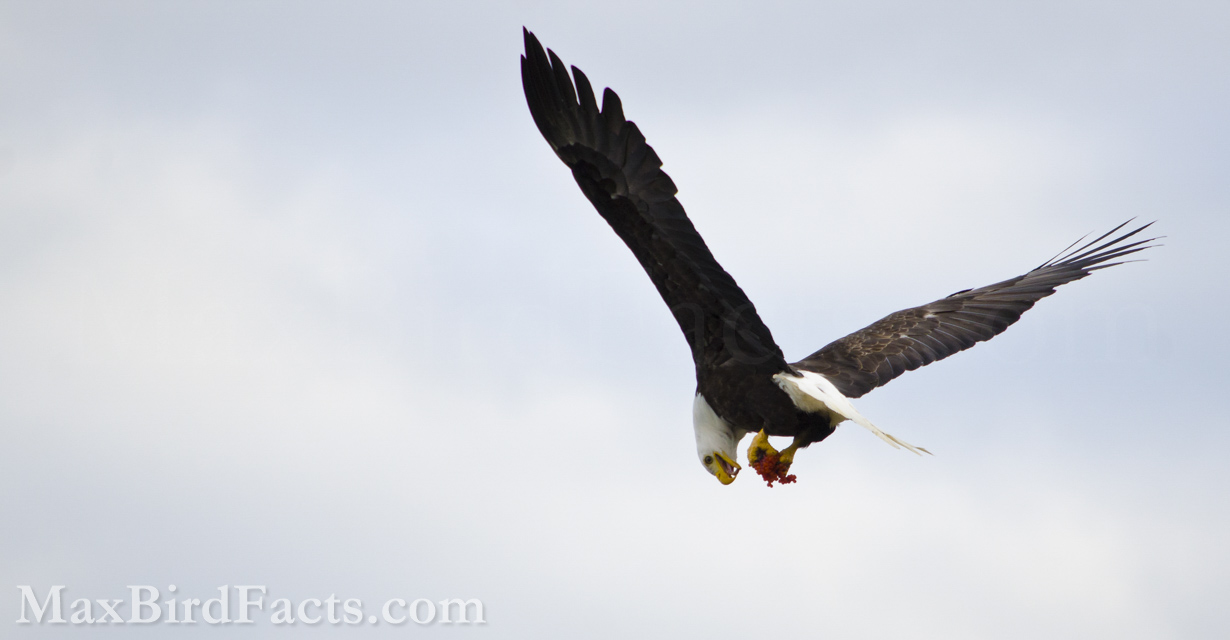
6. Bald Eagles are kleptoparasites.
As Franklin wrote in his letter distaining the Bald Eagle as the national symbol, he speaks about the Eagle taking a fish from the diligent Fishing Hawk. The Fishing Hawk he’s referring to is the Osprey (Pandion haliaetus).
Bald Eagles are rather aggressive birds, often chasing smaller species once they’ve captured a fish. Since the Bald Eagle is second only to the Golden Eagle in size, it easily harasses and bullies other birds into surrendering their prey to escape harm.
Bald Eagles are considered kleptoparasites because of their aggressive behavior of stealing prey from other species. A kleptoparasite is an animal that steals food or objects from another animal while it can acquire this independently.
While Eagles are more than capable of capturing their prey, sometimes it is easier to steal from a less robust species. Bald Eagles will even steal from other members of their own species, making this intraspecific kleptoparasitism.
In the earlier example described by Franklin of the Eagle and Fish Hawk, this is a case of interspecific kleptoparasitism, where a member of one species steals from a different species.
The klepto- prefix to this term means the compulsion to steal. This is an important distinction from a “true” parasite that cannot provide for itself and is required to steal to survive, known as an obligate parasite or holoparasite.
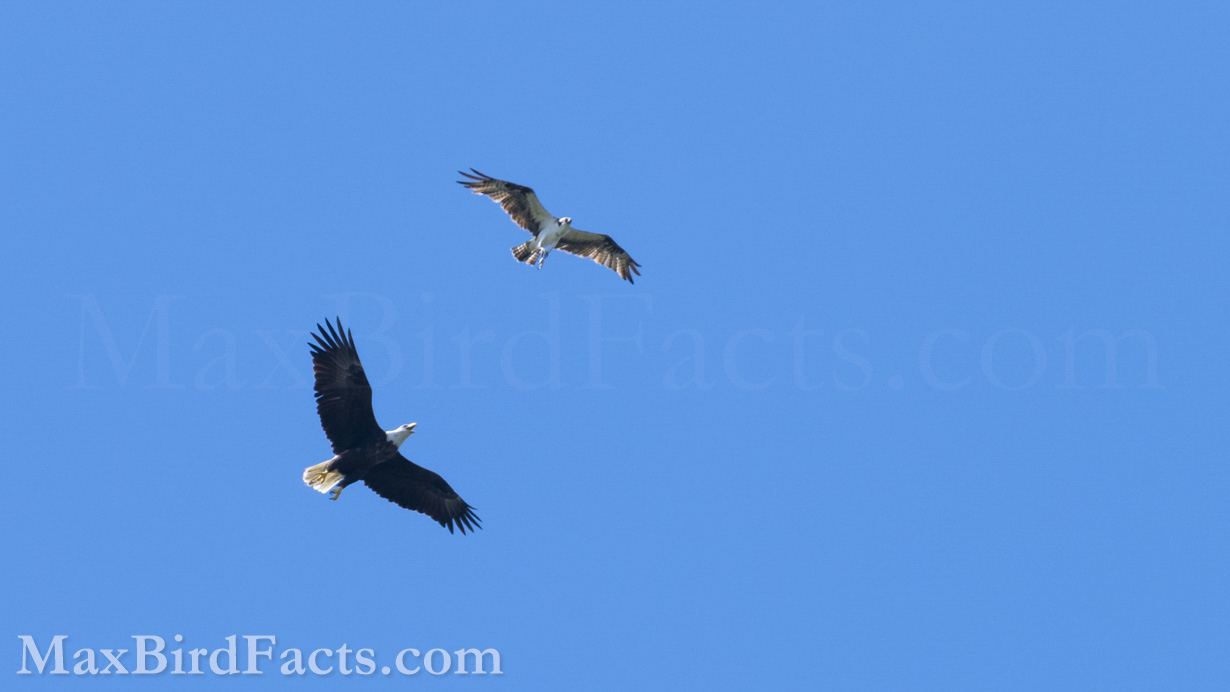
7. Most Bald Eagle calls in movies or TV are actually Red-tailed Hawks.
If you’ve ever watched a piece of media that shows the image of a Bald Eagle, pay attention to the vocalization they overlay. Nine times out of ten, especially with older movies and shows, this is a Red-tailed Hawk call.
There doesn’t seem to be any official statement about why this decision was made to dub the Red-tailed Hawk’s scream over the Bald Eagle’s image. However, I think this is due to the Hawk’s superficially more intense call than the Eagle’s high-pitched whistles.
I’m afraid this is one of the curses of being a birder. The more you learn about the remarkable species around us, the more you’ll catch errors like this and break the immersion filmmakers try to create.
However, the inverse is true when a dedicated auteur gathers the correct bird songs for the region where their story is set, and the immersion is that much more sincere.
8. Not all Bald Eagles migrate.
Depending on your region, you might have resident Bald Eagles that hang out all year and may never fly more than a few square miles from where they hatched.
Birds residing in more coastal areas with more consistent climates can remain in that area year-round. Conversely, Eagles living more inland have seasonal migrations that are more similar to those of other avian species.
Here in Central Florida, we maintain healthy resident populations due to our warm climate and abundance of freshwater ecosystems Bald Eagles love.
In short, the migration requirement for the Bald Eagle is on a much more individual basis for the ease of acquiring food.
If the rivers, lakes, and streams where the bird nests in the northern reaches of Canada freeze over, it will have to fly south to hunt. Yet, if a bird has established its nest in coastal Georgia, it can remain there the year through without much fear of a freeze.
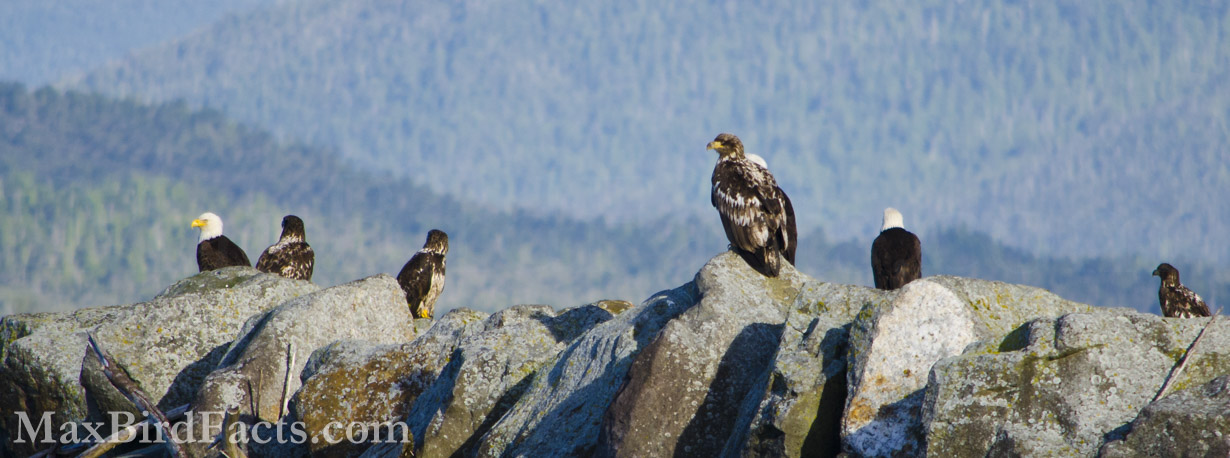
9. The Bald Eagle mating display is breathtaking.
While birds are renowned for their intricate mating displays, from the Greater Prairie Chicken drumming leks to the array of shows the Birds of Paradise perform, the Bald Eagle’s Cartwheel Display is among the most astonishing.
The Cartwheel Display is when a breeding pair flies to a tremendous height, locks their talons together, falls spinning head-first towards the Earth in a death spiral, and releases just before hitting the ground.
This behavior has some clear dangers, but the thrill of the fall builds the bird’s pair bond. Some research even suggests that the closer the birds are to impacting the ground before flying apart, the stronger the bond between Eagles.
10. Bald Eagles mate for life.
Bald Eagles are truly monogamous birds that remain loyal and exclusive to their partner. This is a steep commitment since these birds can live up to 38 years in the wild.
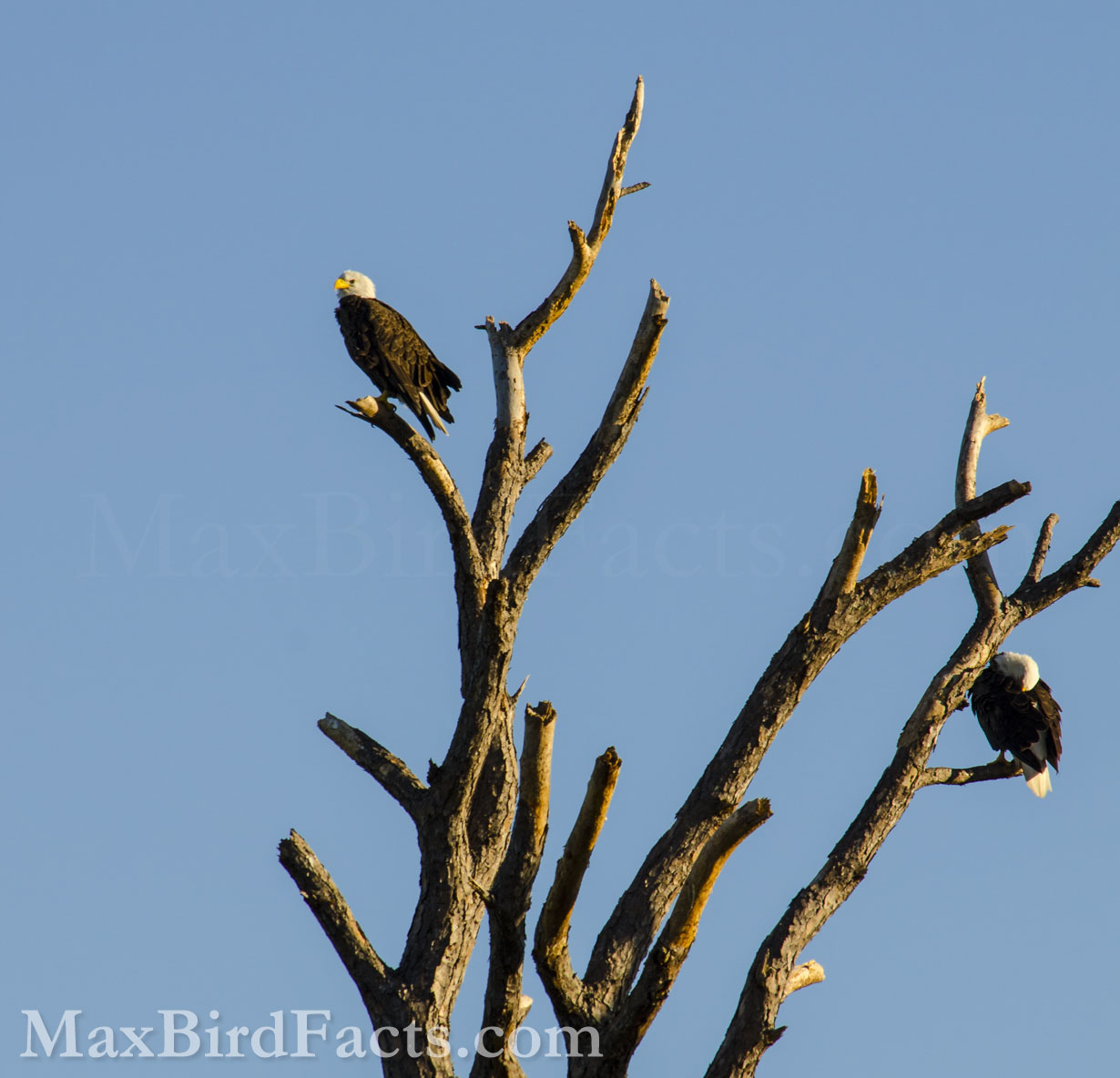
Eagles remain together throughout the year, even for populations that don’t nest during the winter. These birds continually commit courtship behaviors year-round, suggesting powerful pair bonds.
However, when one partner dies, the surviving bird often seeks another mate. Still, unless the pair has severe nest failure, the two Eagles remain loyal as long as they live.
11. Bald Eagle nests can weigh as much as a car.
Bald Eagles have a high site fidelity, meaning they return to the same territory and nesting site year after year.
As we discussed earlier, these birds can live up to 38 years old and begin breeding at four or five, so that could equal over 30 years of returning to the same nest. Throughout that time, repairs are made, the nest gets expanded, and the old nest is built on top of it.
Bald Eagle nests are reasonably easy to find. Since they are large birds, around 6-foot wingspans and 13 pounds, their nests must be equally significant.
The Bald Eagle even holds the record for the heaviest bird nest ever built.
In 1963, a 4,409-pound (2.2 tons) nest measuring 9.5 feet across and 20 feet deep was found in Florida. That weighs the same as a White Rhinocerous or a Toyota 4Runner!
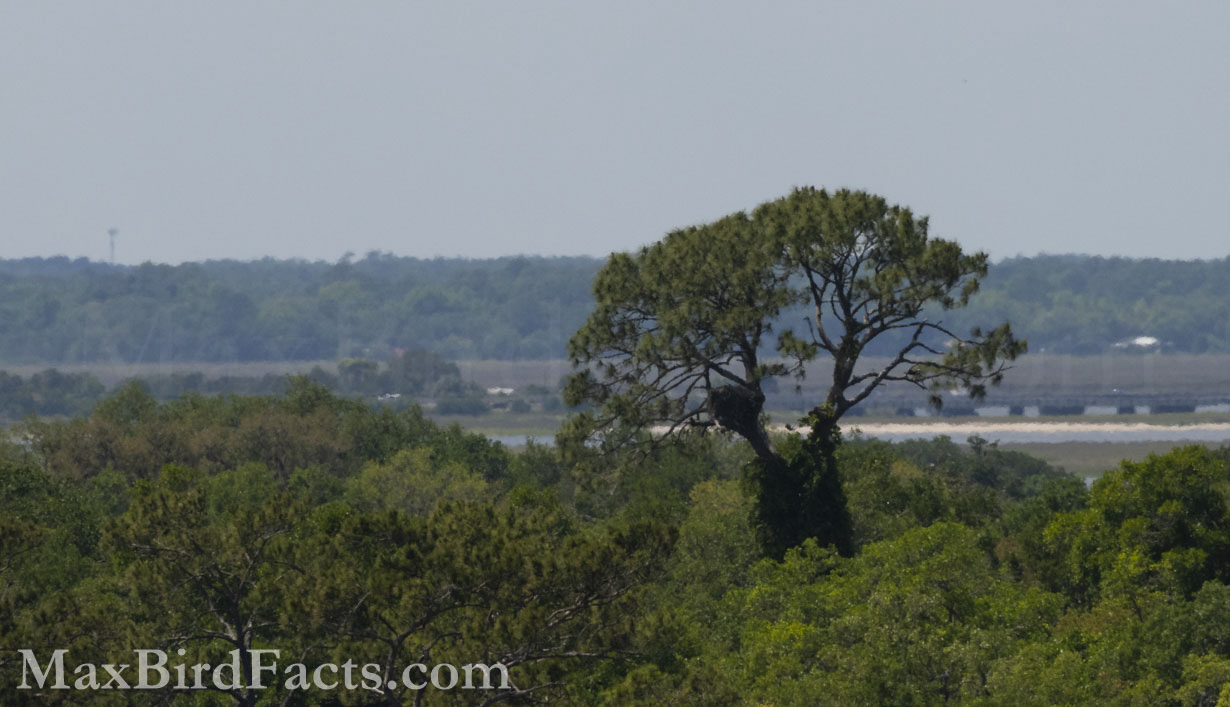
12. Bald Eagles display play behaviors.
Play behavior is where an animal exhibits a behavior that doesn’t seem to hold any intrinsic value for its success or survival.
These behaviors could include tossing an object around, passing an object between individuals, or sliding down a snowy hill. The key to differentiating this behavior from others is the lack of intrinsic value toward survival.
Tossing a stick and chasing it aimlessly is very different from manipulating a twig into a probing tool or throwing it into brush to startle hiding prey. Similarly, a raven lying on its back and sliding down a snowy hill doesn’t seem to aid its genetic success or survival.
Playing can help build an animal’s muscle memory and social skills.
Young birds often play with their siblings, wrestling for food or chasing each other in the air. These activities help build foundations for valuable skills when they’re adults.
However, play behavior is much less frequent in adult birds. Species commonly regarded as highly intelligent, such as corvids and parrots, often show play behavior as adults.
Several studies even point to avian species that display play behavior having larger brain size ratios than species that exhibit tool use behavior.
While it’s difficult to know for certain if Bald Eagles are playing when they pass a fish, twig, or other object to each other mid-flight, it’s equally as challenging to come up with an alternative explanation.
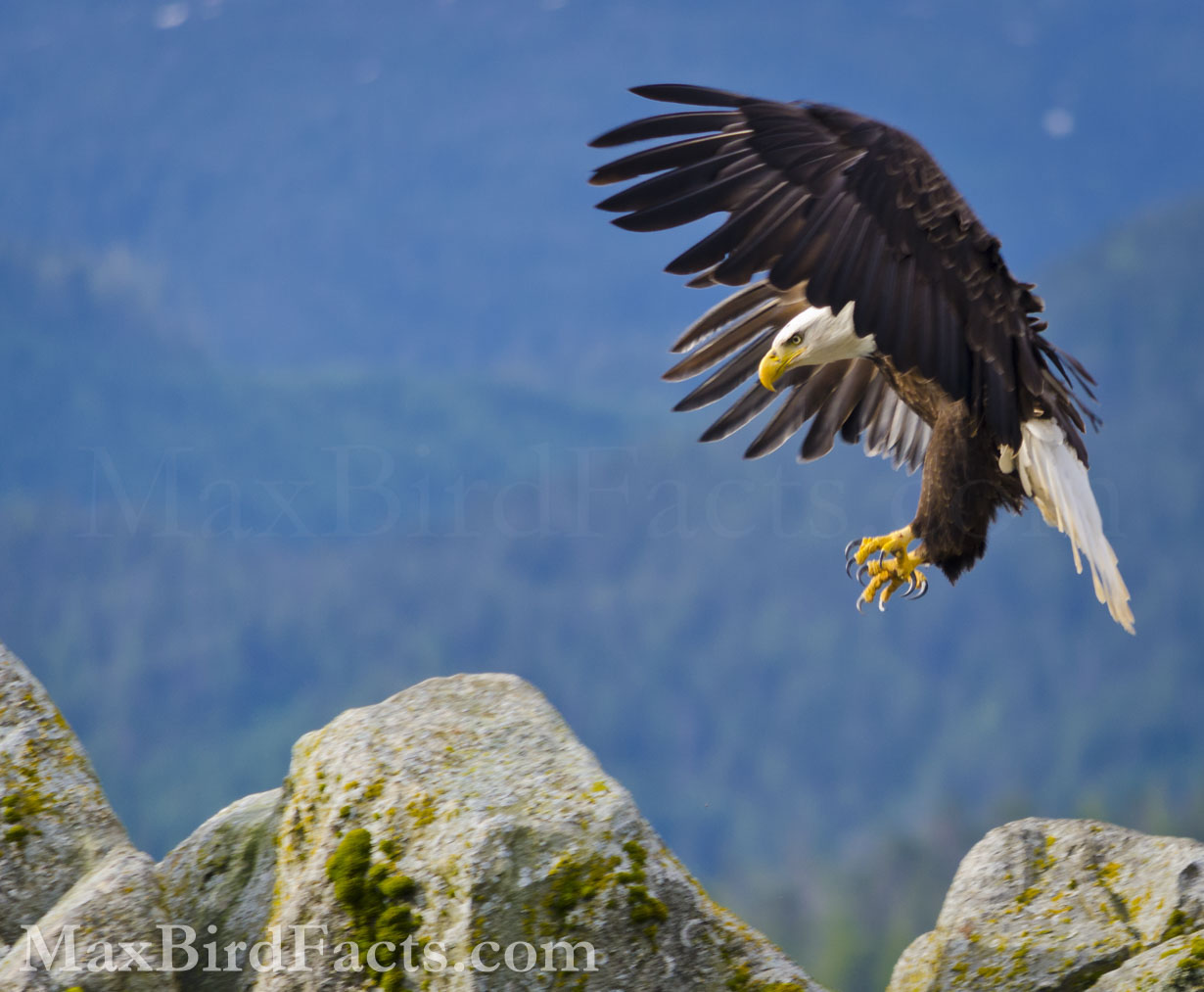
13. Bald Eagles have incredibly powerful eyesight.
Eagles have some of the best vision in the animal world. Their central fovea has 1,000,000 cones per mm2 compared to our 200,000, making their fine-point focus five times more precise.
So, if someone truly had “eagle eyes,” they could see something at five times the normal distance without any loss in clarity. This would mean something clear at ten feet would look the same at fifty feet, or something at 50 yards would be the same at 250 yards.
Their eyesight is so powerful because it’s their primary method of finding prey. Whether they need to spot an Osprey carrying off a fish, a deer on the side of the road, or a salmon just below the waves, the Bald Eagle’s eyes are their key to success.
If you want to see how I mathematically proved that Eagles have the most powerful eyes in the animal kingdom, check out my article How Far Can An Eagle See – Mathematically Proving Birds Are Best!
14. The Bald Eagle nearly became extinct in the 1960s.
The pesticide dichlorodiphenyltrichloroethane (DDT) was used extensively during the early to mid-20th century to fight insects carrying diseases and feeding on crops.
However, raptor populations declined during the same period of DDT’s use. Researchers found that one of the forms DDT breaks down into, DDE, decreases calcium transport from the blood to the shell gland, resulting in thinner eggshells.
These thin shells couldn’t support the weight of the adult bird while it incubated the egg, causing major nest failures for birds affected by the pesticide.
In 1963, only 400 to 500 nesting pairs of wild Bald Eagles were in North America.
The Bald Eagle was listed as an endangered species in 1967, only a year after the Endangered Species Preservation Act was passed. However, this was only for resident populations of Eagles below the 40th parallel.
The Environmental Protection Agency (EPA) banned the use of DDT in 1972 due to these eggshell studies and the noticeable declines in Bald Eagles, Osprey, Peregrine Falcon, and many other avian species.
In 1978, the United States updated the Bald Eagle’s status to endangered nationwide. This increased protection sparked major movements to study, monitor, and assist in the growth of the Eagle population.
Thankfully, the Bald Eagle was removed from the endangered species list in 2007. As of 2021, the Department of the Interior stated that the eagle’s population has quadrupled since 2009.
15. The Bald Eagle has a population of around 317,000 birds today.
Today, there are nearly 72,000 active nests or around 36,000 nesting pairs. That’s a 9,000% increase from their low point in the 1960s.
The Bald Eagle is widely regarded as one of the best success stories for endangered species. From the brink of extinction to being relatively common throughout the country it represents, this bird is remarkable.
Its success is due in part to its flexibility. As I mentioned earlier, because of the Bald Eagle’s flexible diet, they could change food sources depending on where they were and thrive.
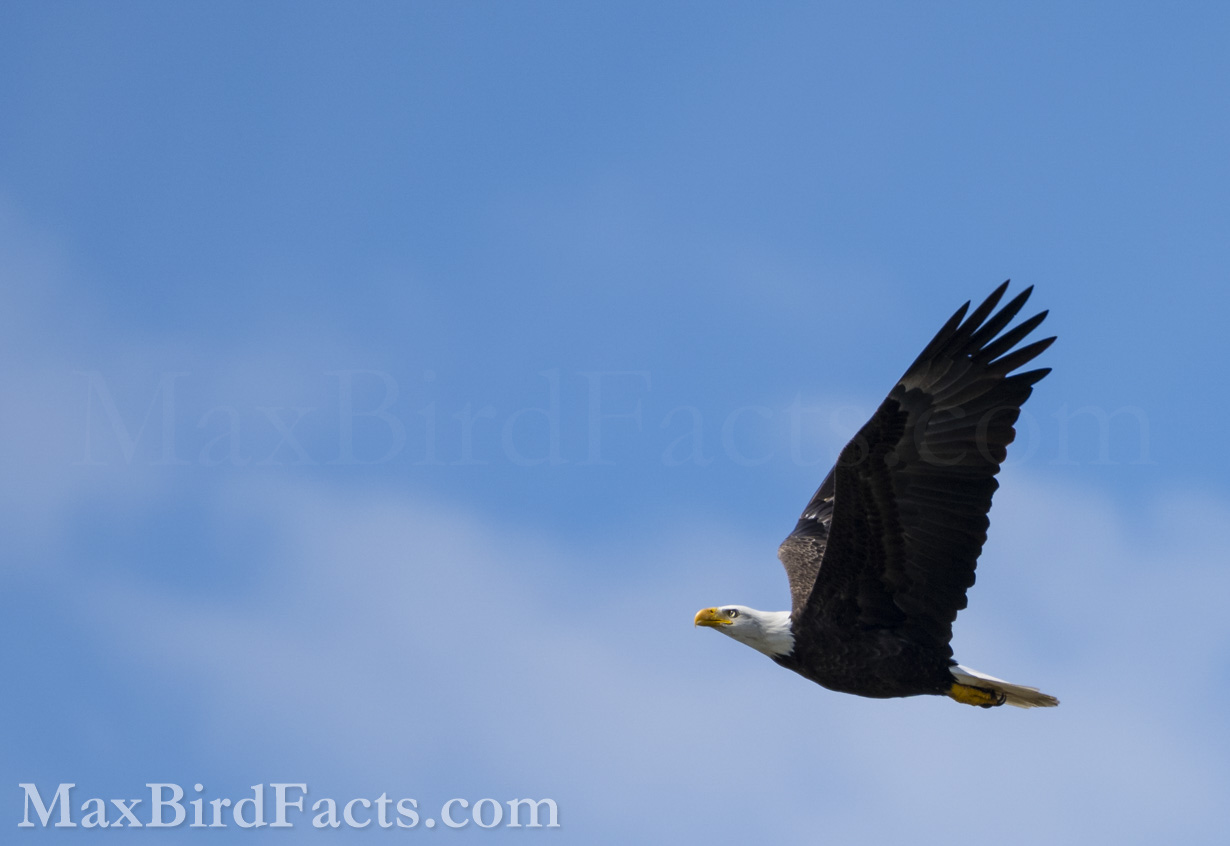
Now We Know 15 Facts About The Bald Eagle!
I hope some of these facts were new to you!
From its history of becoming the symbol of the United States to its astonishing behaviors and success story, the Bald Eagle is a truly remarkable species.
If you have ideas or suggestions for topics you would like me to write about in the future, feel free to leave a comment or email me!
Don’t forget to subscribe to my email list to be the first to know when I post new articles!
Get Outside & Happy Birding
Max
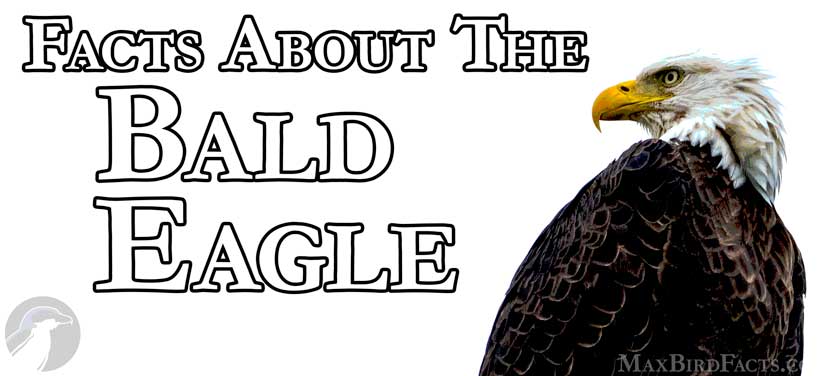
Enjoyed this wonderful and very informative article. Beautiful pictures as usual also, Max.
I think that Ben Franklin was right!
Thank you Maria, I’m so glad you enjoyed the article!